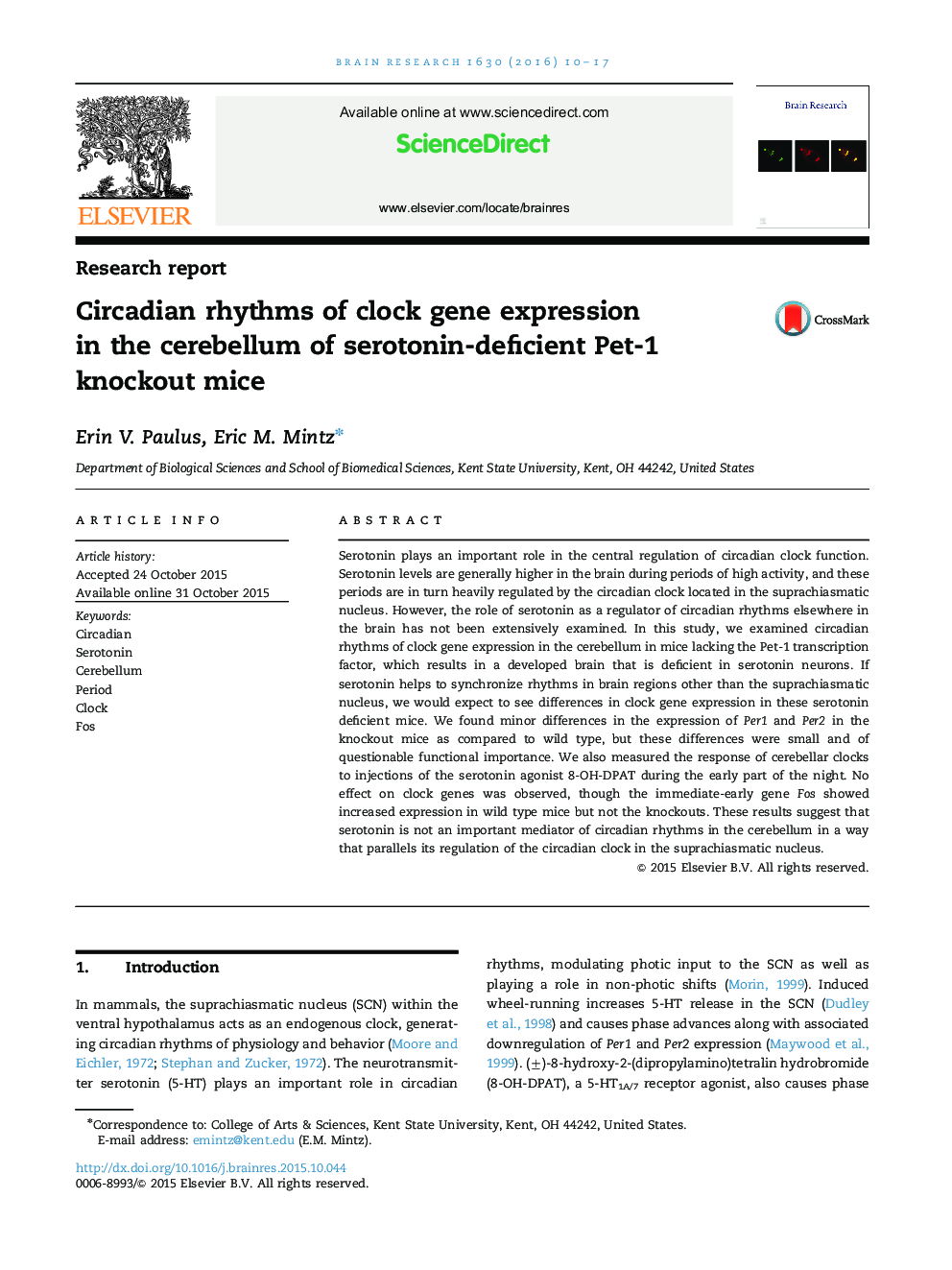| کد مقاله | کد نشریه | سال انتشار | مقاله انگلیسی | نسخه تمام متن |
|---|---|---|---|---|
| 6262634 | 1613810 | 2016 | 8 صفحه PDF | دانلود رایگان |

- The absence of 5HT neurons has little impact on clock genes in the cerebellum.
- Serotonin does not have a strong influence on cerebellar clocks.
- Loss of 5HT neurons reduces cerebellar responses to 8-OH-DPAT.
Serotonin plays an important role in the central regulation of circadian clock function. Serotonin levels are generally higher in the brain during periods of high activity, and these periods are in turn heavily regulated by the circadian clock located in the suprachiasmatic nucleus. However, the role of serotonin as a regulator of circadian rhythms elsewhere in the brain has not been extensively examined. In this study, we examined circadian rhythms of clock gene expression in the cerebellum in mice lacking the Pet-1 transcription factor, which results in a developed brain that is deficient in serotonin neurons. If serotonin helps to synchronize rhythms in brain regions other than the suprachiasmatic nucleus, we would expect to see differences in clock gene expression in these serotonin deficient mice. We found minor differences in the expression of Per1 and Per2 in the knockout mice as compared to wild type, but these differences were small and of questionable functional importance. We also measured the response of cerebellar clocks to injections of the serotonin agonist 8-OH-DPAT during the early part of the night. No effect on clock genes was observed, though the immediate-early gene Fos showed increased expression in wild type mice but not the knockouts. These results suggest that serotonin is not an important mediator of circadian rhythms in the cerebellum in a way that parallels its regulation of the circadian clock in the suprachiasmatic nucleus.
Journal: Brain Research - Volume 1630, 1 January 2016, Pages 10-17